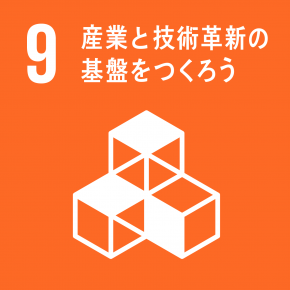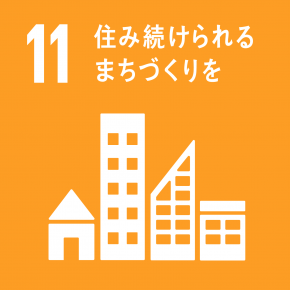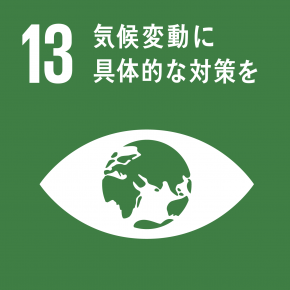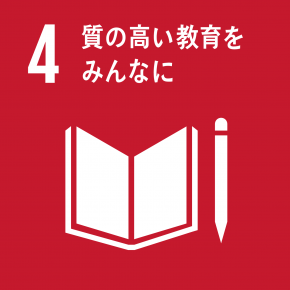|
職名 |
教授 |
|
科研費研究者番号 |
80620153 |
|
研究室住所 |
沖縄県国頭郡本部町瀬底 3422番地 |
|
メールアドレス |
|
|
研究室電話 |
098-047-2997 |
|
ホームページ |
|
|
|
|
高橋 俊一 (タカハシ シュンイチ)
TAKAHASHI Shunichi
|
|
|
出身大学院 【 表示 / 非表示 】
-
1997年04月-1999年03月
琉球大学 理工学研究科 修士課程 修了
-
1999年04月-2002年03月
琉球大学 理工学研究科 博士課程 修了
職歴 【 表示 / 非表示 】
-
2002年04月-2003年03月
基礎生物学研究所 協力研究員/博士研究員
-
2003年04月-2006年03月
基礎生物学研究所/名古屋大学 日本学術振興会特別研究員
-
2006年04月-2008年03月
オーストラリア国立大学 日本学術振興会海外特別研究員
-
2008年04月-2010年12月
オーストラリア国立大学 リサーチアソシエイト
-
2011年01月-2014年09月
オーストラリア国立大学 ラボリーダー
所属学会・委員会 【 表示 / 非表示 】
-
日本共生生物学会
-
日本光合成学会
-
日本サンゴ礁学会
-
International Society of Photosynthesis Research
-
International Society for Reef Studies
主たる研究テーマ 【 表示 / 非表示 】
-
サンゴの蛍光の生理的機能
-
サンゴの同調産卵メカニズム
-
サンゴの高温環境適応メカニズム
-
サンゴの白化メカニズム
-
サンゴと藻類の共生メカニズム
論文 【 表示 / 非表示 】
-
Environmental pH signals the release of monosaccharides from cell wall in coral symbiotic alga
Yuu Ishii, Hironori Ishii, Takeshi Kuroha, Ryusuke Yokoyama, Ryusaku Deguchi, Kazuhiko Nishitani, Jun Minagawa,Masakado Kawata, Shunichi Takahashi, Shinichiro Maruyama
eLife 12 e80628 2023年08月 [ 査読有り ]
掲載種別: 研究論文(学術雑誌)
-
この論文にアクセスする
-
-
Moonrise timing is key for synchronized spawning in coral Dipsastraea speciosa
Lin Che-Hung, Takahashi Shunichi, Mulla Aziz J., Nozawa Yoko
PROCEEDINGS OF THE NATIONAL ACADEMY OF SCIENCES OF THE UNITED STATES OF AMERICA ( NATL ACAD SCIENCES ) 118 ( 34 ) 2021年08月 [ 査読有り ]
掲載種別: 研究論文(学術雑誌)
-
この論文にアクセスする
-
-
Photo-movement of coral larvae influences vertical positioning in the ocean
Mulla Aziz J., Lin Che-Hung, Takahashi Shunichi, Nozawa Yoko
CORAL REEFS ( SPRINGER ) 40 ( 4 ) 1297 - 1306 2021年08月 [ 査読有り ]
掲載種別: 研究論文(学術雑誌)
-
この論文にアクセスする
-
-
Chloroplast acquisition without the gene transfer in kleptoplastic sea slugs, Plakobranchus ocellatus
Maeda T, Takahashi S, Yoshida T, Shimamura S, Takaki Y, Nagai Y, Toyoda A, Suzuki Y, Arimoto A, Ishii H, Satoh N, Nishiyama T, Hasebe M, Maruyama T, Minagawa J, Obokata J, Shigenobu S
eLife ( ELIFE SCIENCES PUBLICATIONS LTD ) 10 10:e60176 2021年04月 [ 査読有り ]
掲載種別: 研究論文(学術雑誌)
-
この論文にアクセスする
-
-
Loss of symbiont infectivity following thermal stress can be a factor limiting recovery from bleaching in cnidarians
Kishimoto Mariko, Baird Andrew H., Maruyama Shinichiro, Minagawa Jun, Takahashi Shunichi
ISME JOURNAL ( SPRINGERNATURE ) 14 ( 12 ) 3149 - 3152 2020年12月 [ 査読有り ]
掲載種別: 研究論文(学術雑誌)
-
この論文にアクセスする
-
関連情報を調べる
-
MISC(その他業績・査読無し論文等) 【 表示 / 非表示 】
-
刺胞動物と褐虫藻のサイズ依存的な共生関係
高橋 俊一
生物科学 69 ( 4 ) 209 - 213 2018年 [査読有り]
-
光合成をする生き物の多様な世界
高橋 俊一
milsil 7 ( 6 ) 10 - 12 2014年 [査読有り]
-
なぜ炭酸固定活性の低下により光阻害がおこるのか?
高橋 俊一
光合成研究会会報 46 9 - 13 2006年 [査読有り]
研究発表等の成果普及活動 【 表示 / 非表示 】
-
サンゴの環境適応:白化が新たな褐虫藻の獲得を促進する
新保 秀美, Ee Suan Tan, Muggi Bachtiar, 高橋俊一
日本藻類学会大49回大会 2025年03月 - 2025年03月
-
高温ストレスはサンゴの緑色蛍光による褐虫藻誘引を阻害する?
横山 友起, 岩瀬 桃子,田辺馨, 高橋 俊一
日本藻類学会大49回大会 2025年03月 - 2025年03月
-
サンゴ礁保全を目指した共生性渦鞭毛藻類の培養技術の開発
田辺馨, Tan Ee Suan, 高橋俊一
日本藻類学会大49回大会 2025年03月 - 2025年03月
-
Molecular study of moonlight regulation in coral synchronous spawning
Ee Suan TAN, Che-hung LIN, Luigi COLIN, Christian VOOLSTRA, Yoko NOZAWA, Shunichi TAKAHASHI
日本サンゴ礁学会第26回大会 2024年11月 - 2024年12月
-
海水温調節によるサンゴの産卵タイミングの制御
永田 真由, 永田 史彦, Tan Ee Suan, 高橋 俊一
日本サンゴ礁学会第26回大会 2024年11月 - 2024年12月
科研費獲得情報 【 表示 / 非表示 】
-
環境適合型サンゴの養殖・移植技術の確立
挑戦的研究(開拓)
課題番号: 24K21334
研究期間: 2024年06月 - 2029年03月
代表者: 高橋俊一 研究分担者: 井口亮
直接経費: 19,900,000(円) 間接経費: 5,970,000(円) 金額合計: 25,870,000(円)
-
サンゴ骨格を用いた蓄積型栄養塩評価の新展開
基盤研究(B)
課題番号: 24K03136
研究期間: 2024年04月 - 2028年03月
代表者: 鈴木 淳 研究分担者: 井口 亮、安元 剛 、高橋 俊一
直接経費: 16,770,000(円) 間接経費: 12,900,000(円) 金額合計: 3,870,000(円)
-
サンゴ礁及び周辺生態系由来の環境酵素によるフェーズシフト抑制効果の検証
基盤研究(A)
課題番号: 24H00784
研究期間: 2024年04月 - 2028年03月
代表者: 井口亮 研究分担者: 田邊 俊朗、高橋 俊一 、水山 克
直接経費: 36,800,000(円) 間接経費: 11,040,000(円) 金額合計: 47,840,000(円)
-
サンゴの高温適応を考慮した新たな将来予測の実現
基盤研究(A)
課題番号: 23H00535
研究期間: 2023年04月 - 2027年03月
代表者: 高橋俊一 研究分担者: 井口亮、熊谷直喜、野澤洋耕
直接経費: 36,200,000(円) 間接経費: 10,860,000(円) 金額合計: 47,060,000(円)
-
コラリコリッドはサンゴの高温耐性を高めるか? 研究課題
基盤研究(C)
課題番号: 23K05372
研究期間: 2023年04月 - 2027年03月
代表者: 酒井一彦 研究分担者: 高橋俊一、井口亮、水山克
その他研究費獲得情報 【 表示 / 非表示 】
-
褐虫藻の光阻害によるサンゴ白化機構の解明
研究費種類: 財団・社団法人等の民間助成金 参画方法: 研究分担者
研究種別: 研究助成 事業名: 公益財団法人発酵研究所研究室助成
研究期間: 2023年04月 - 2027年03月
代表者: 河合寿子 資金配分機関: 公益財団法人発酵研究所
直接経費: 20,000,000(円) 金額合計: 20,000,000(円)
-
エンドサイトーシスの許容取込サイズの向上による共生能力獲得機構の解明
研究費種類: 財団・社団法人等の民間助成金 参画方法: 研究代表者
研究種別: 研究助成 事業名: 大隅基礎科学創成財団研究助成 基礎科学(一般)
研究期間: 2021年11月 - 2023年10月
資金配分機関: 大隅基礎科学創成財団
-
気孔開度制御による植物の光合成活性と生産量の促進
研究費種類: 公的研究費(省庁・独法・大学等) 参画方法: 研究分担者
研究種別: 受託研究 事業名: 先端的低炭素化技術開発(ALCA)
研究期間: 2016年 - 2020年
代表者: 木下俊則 資金配分機関: 科学技術振興機構
-
Avoiding coral bleaching: investigation into the repair of damaged photosynthetic machinery in symbiotic algae (Symbiodinium) within corals
研究費種類: 公的研究費(省庁・独法・大学等) 参画方法: 研究代表者
研究種別: 研究助成 事業名: Discovery Project
研究期間: 2012年 - 2014年
代表者: 高橋 俊一 連携研究者: 高橋 俊一 資金配分機関: Australian Research Council
金額合計: 30,000,000(円)
-
Understanding of thermal acclimation mechanisms in symbiotic algae (Symbiodinium) within cnidarian corals
研究費種類: 公的研究費(省庁・独法・大学等) 参画方法: 研究代表者
研究種別: 研究助成 事業名: Australian Research Fellowship
研究期間: 2011年01月 - 2015年12月
代表者: 高橋 俊一 連携研究者: 高橋 俊一 資金配分機関: Australian Research Council
金額合計: 60,000,000(円)
SDGs 【 表示 / 非表示 】
-
サンゴ礁に生息するサンゴは、体の中に褐虫藻と呼ばれる藻類を共生させています。これにより、サンゴは動物でありながら、光(光合成)で栄養を得ることができます。しかし、海水温の上昇によるサンゴの白化(褐虫藻の喪失)が起こると、サンゴは栄養不足となり餓死します。地球温暖化に伴い、「サンゴの白化」と「サンゴ礁生態系の崩壊」が地球規模の問題となっており、早急の解決が望まれています。
サンゴの白化の起こりやすさは、共生する褐虫藻の種類によりことなります。そのため、サンゴは高温に適した褐虫藻種を共生させることで、白化を回避することができます。しかし、自然界では、これが簡単には起こりません。そこで私の研究室では、サンゴが高温に適した褐虫藻種を効率よく獲得する技術の開発を進めています。この技術は、「サンゴの白化抑制」や「サンゴ礁生態系の保全」に役立つと期待されます。
本研究プロジェクトを支援・協力する企業を募集しています。興味があれば、高橋までご連絡ください。



学外の社会活動(高大・地域連携等) 【 表示 / 非表示 】
-
カガクノジカン
名護博物館、沖縄科学技術大学院大学(OIST)、沖縄工業高等専門学校、JAMSTEC(GODAC国際海洋環境情報センター)
2025年04月


-
本部高校チャレンジ塾
本部高校
2024年03月


-
ジョブシャドウイング
本部町教育委員会
2024年01月

-
SSH(スーパーサイエンスハイスクール)事業
三重県立四日市高等学校
2023年10月


-
ネクスト・パラダイム公開セミナー
国立大学法人豊橋技術科学大学
2023年09月





